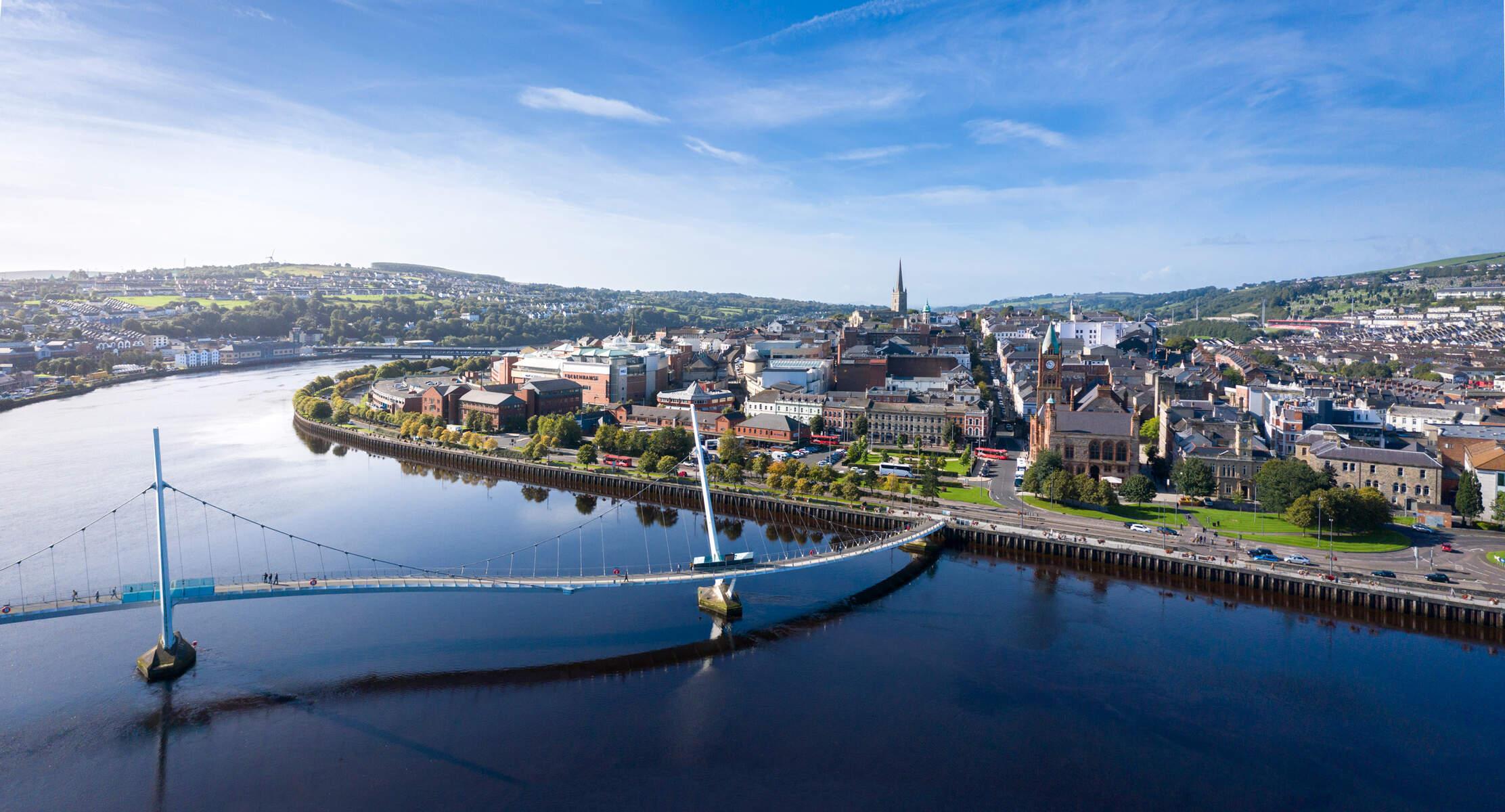
Walled city pilgrims
by Nina McNeary, Support Officer Northern Ireland
Step into the warm embrace of the Walled City of Derry, a city of two names echoing its unique heritage and character.
Its patron saint also has two names, St Columba or St Columcille, an Irish abbot and missionary who is credited with spreading Christianity in present day Scotland and the foundation of Iona. The name Derry comes from the Irish word 'Doire', which means 'oak grove'.
Christianity arrived in Derry when St Columba founded his first church at the site in either 535 or 546 AD. The connection with St Columba ensured that Doire thrived as an ecclesiastical centre over the following millennium and many pilgrims made their way to this ancient place.
In May 1600, Sir Henry Docwra, acting under the directive of Queen Elizabeth I, set foot in Derry with a strategic mission: to rein in the Ulster Chieftains and fortify the town under English control. In 1613, King James I granted a charter to the Honourable the Irish Society, bestowing upon the city the prefix "London" and officially designating it as Londonderry.
The city has witnessed the ebb and flow of centuries, embracing its past with a firm eye on the future, this is a resilient city with a remarkable history. It invites you to wander its streets and trace the footsteps of history along the world famous Derry Walls.
During the era of sailing ships, the city was a pivotal port of embarkation for emigrants leaving Ireland's shores. Derry stands as the poignant starting point of countless journeys of hope and opportunity.
In Derry, melodies drift in the air, carrying with them the heartbeat of a city immortalised in song. From the haunting strains of The Town I Loved so Well to the timeless melody of the Londonderry Air, music weaves itself into the very fabric of this city. On screen, its spirit shines through in the beloved series Derry Girls, where humour and heart reveal the resilience and warmth of its people.
Derry beckons you to delve deep into its treasure trove of architecture, arts, and archaeology, with thoughtful artistic references to its patron saint throughout the city waiting to be discovered. It promises to be a journey like no other.
This trail is one of six new trails across Northern Ireland created as part of our Treasure Ireland project, supported by The National Lottery Heritage Fund, which helps to keep places of worship in Northern Ireland open and in good repair.
Find more churches, chapels and meeting houses to visit across Northern Ireland
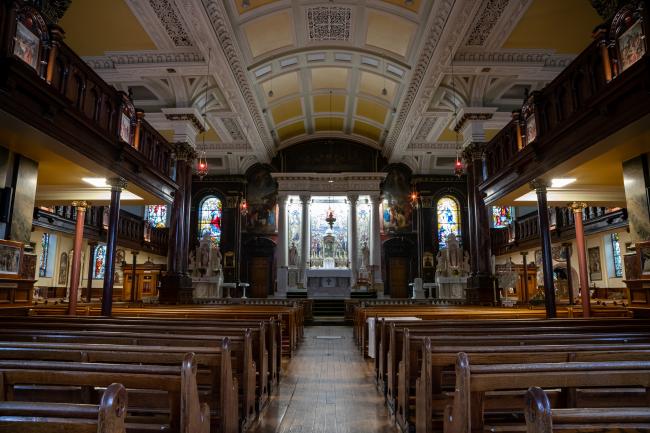
St Columba, Long Tower
The church stands on a site believed to be where St Columcille founded the city’s first church in the 6th century, later known as Teampall Mór, Derry’s medieval cathedral.
Built in 1784, it became a symbol of hope following the easing of the Penal Laws. Renovations in 1909 added marble detailing and fine joinery, while stunning opus sectile mosaics by artist Ludwig Oppenheimer were added in 1915. A bullaun stone from close to St Columba’s Holy Well now forms part of the church’s grotto.

@DillonOsborneCourtesyTourismNorthernIreland

St Eugene's Cathedral
A masterpiece of Gothic Revival architecture by James Joseph McCarthy, which invites visitors into a space of awe and beauty.
Located near the historic site of a former Dominican Friary, its construction began in the 1850s after a decade of famine delayed earlier plans. Inside, vibrant stained glass windows by Mayer of Munich cast dazzling light across the chancel and chapels. The Bishop Kelly Memorial Window from 1891 is majestic above the sanctuary - illustrating seven scenes from the life of Christ.
Find out more about the cathedral here
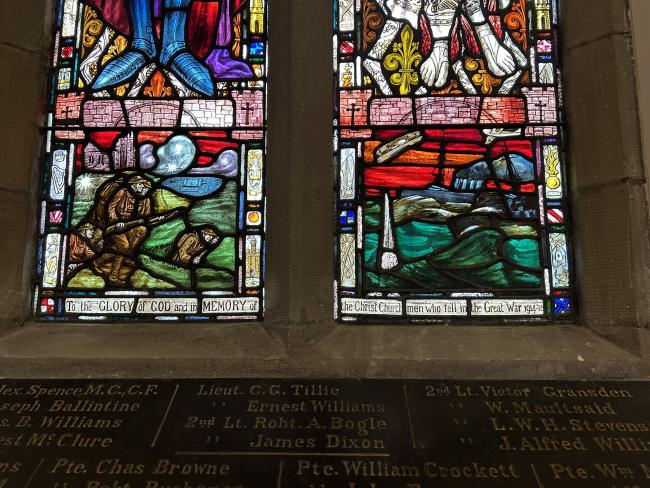
Christ Church
Christ Church began as a chapel of ease for Derry’s working class. As the city grew, so did its congregation, becoming a vibrant reflection of the community. Designed in Gothic style by John Ferguson, using local schist and pale sandstone.
Within its sacred confines, are exquisite stained glass windows and a poignant First World War memorial crafted by the celebrated Irish artist, William MacBride (1880-1962). Today, Christ Church is a beacon of hospitality and cultural enrichment.
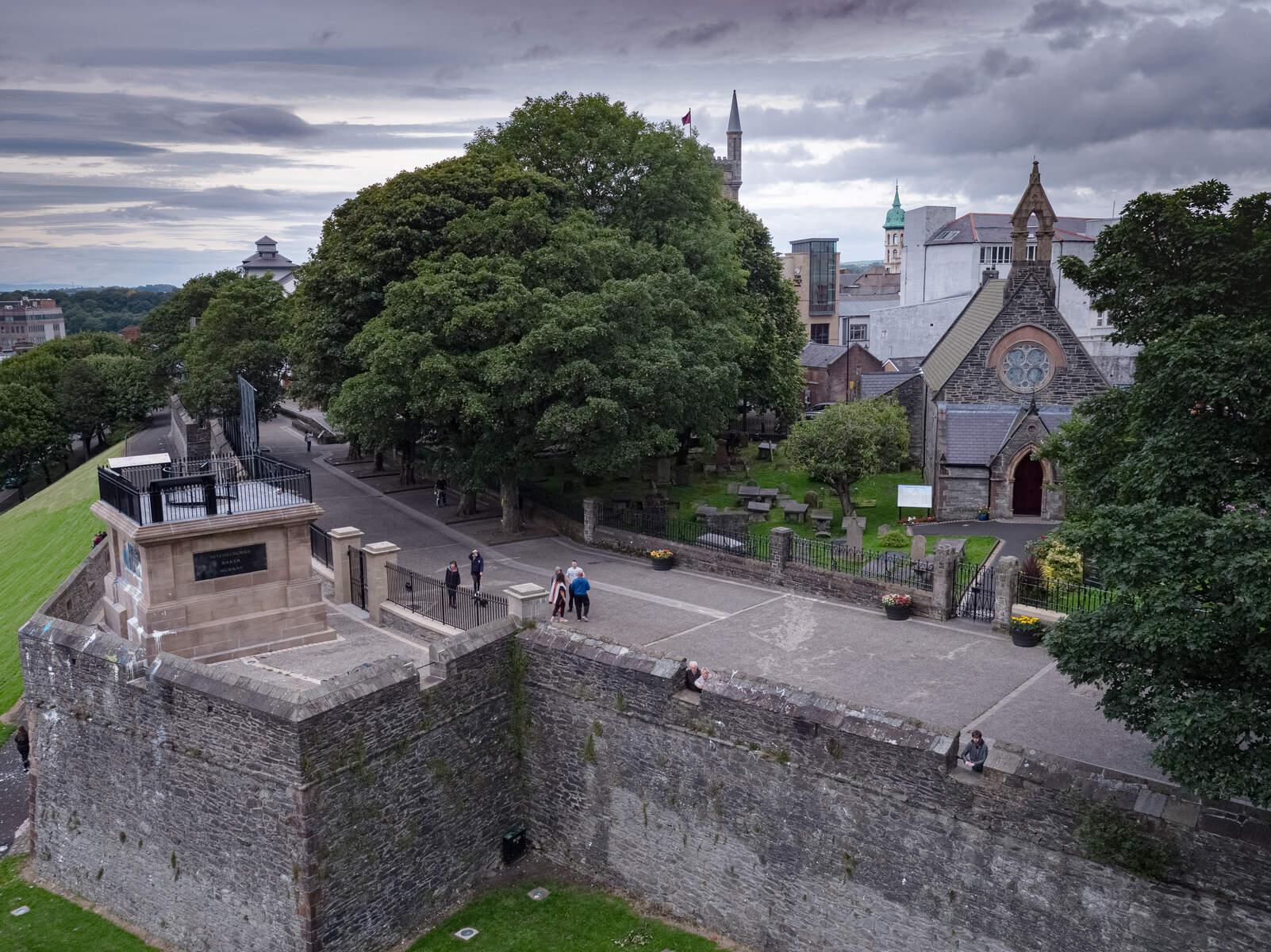
©DerryCity&StrabaneCouncil
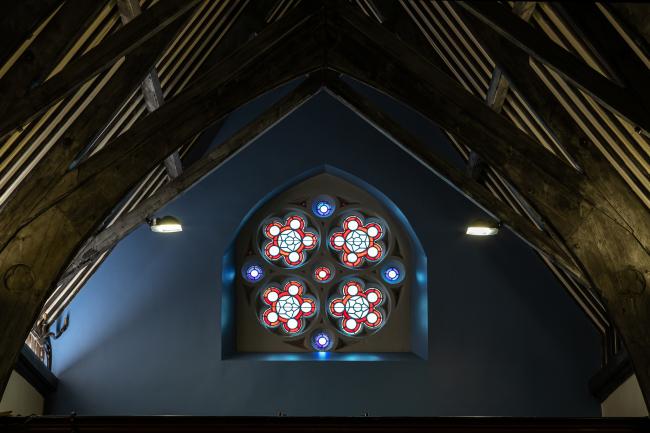
St Augustine, the Wee Church on the Wall
This sacred place holds a storied past that stretches back to the city's medieval origins and is also thought to serve as the site of the revered 'Dubh Regles' (Black Abbey) from 1166 to the early 17th century.
Rebuilt in 1871–72 by architect John Guy Ferguson, the church blends medieval style with Victorian charm. Its peaceful churchyard features centuries old gravestones and thriving wildlife. Inside, stained glass by Clokey & Co and a striking scissor-braced roof add beauty. Nestled within the historic city walls, this cherished sanctuary plays host to a diverse array of events and gatherings, welcoming both locals and visitors alike with open arms. It's well worth stepping off the walls to visit.
Find out more about the church here
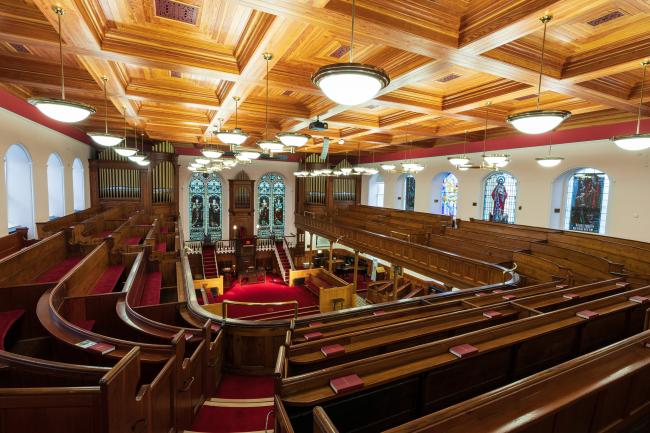
First Derry Presbyterian Church
First Derry Presbyterian Church stands on the site of a 1690 meeting house, funded by Queen Mary to honor Presbyterian defenders of the 1689 Siege of Derry. The current church, with its grand temple façade, opened in 1780 and remains a striking landmark. After years of damage and disrepair, it was fully restored thanks to the dedication of its congregation.
Adjacent, the historic Blue Coat School, founded to educate choirboys, has been transformed into the Blue Coat School Heritage Centre. Visitors can explore the history of Presbyterians in the region, tracing their journey from the 1600s to the present in this inspiring space.
Find out more about the church here

St Columb, Derry Cathedral
Built between 1628 and 1633, this was the first Protestant cathedral constructed in the British Isles after the Reformation. Named after St Columba, it stands proudly within Derry’s historic walls. Perched atop a commanding hill, during the 1688–89 Siege of Derry its spire was damaged and its lead used for musket balls. The end of the Siege was reportedly heralded by a boy named James McGregor who climbed to the top of the city Cathedral to fire a cannon.
The cathedral houses the oldest peal of bells in Ireland and remarkable relics, including Siege artefacts and stained glass windows. Victorian renovations gave the building its current form, offering visitors a powerful journey through faith, resilience, and local history.
Find out more about the cathedral here
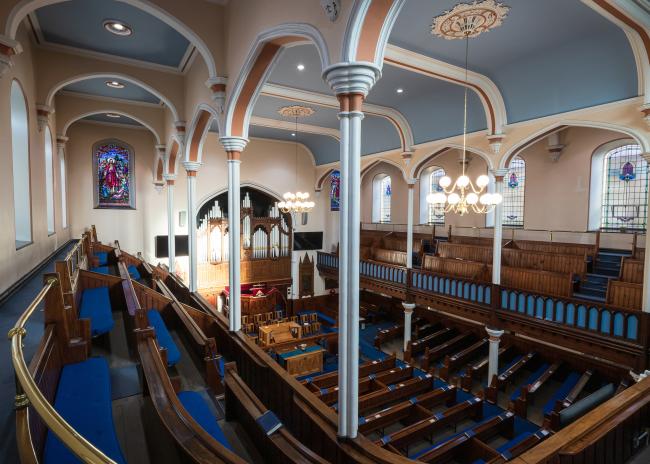
Carlisle Road Presbyterian Church
Built between 1877 and 1879, this Tudor Gothic style church, Derry’s fourth Presbyterian Church, is a striking landmark with a gabled facade flanked by mock turrets and pinnacles.
Inside, visitors are drawn to two exquisite stained glass windows by Belfast artist WF Clokey, positioned on either side of the First World War memorial organ. These vibrant windows add colour and reverence to the sanctuary. A treasured feature is the oak baptismal font, gifted by the Women’s Fellowship in 1948. It stands as a poignant tribute to members of the congregation who lost their lives during the Second World War.
Find out more about the church here
Carlisle Road Methodist Church
Hailed as “one of the most beautiful churches in Irish Methodism,” the church impresses with its striking three-stage tower and spire. Founded in the 18th century, it replaced a smaller chapel as Methodism grew alongside Derry’s industrial expansion.
Inside, the church features a timber-panelled ceiling, theatrical gallery, and stunning pulpit and organ. Art Nouveau tracery windows and two stained glass pieces by Clokey Studios enrich the space. Though congregation numbers declined, recent years have seen revival and community engagement. Bronze doves gifted to local churches symbolize peace and the shared legacy of St Columba.
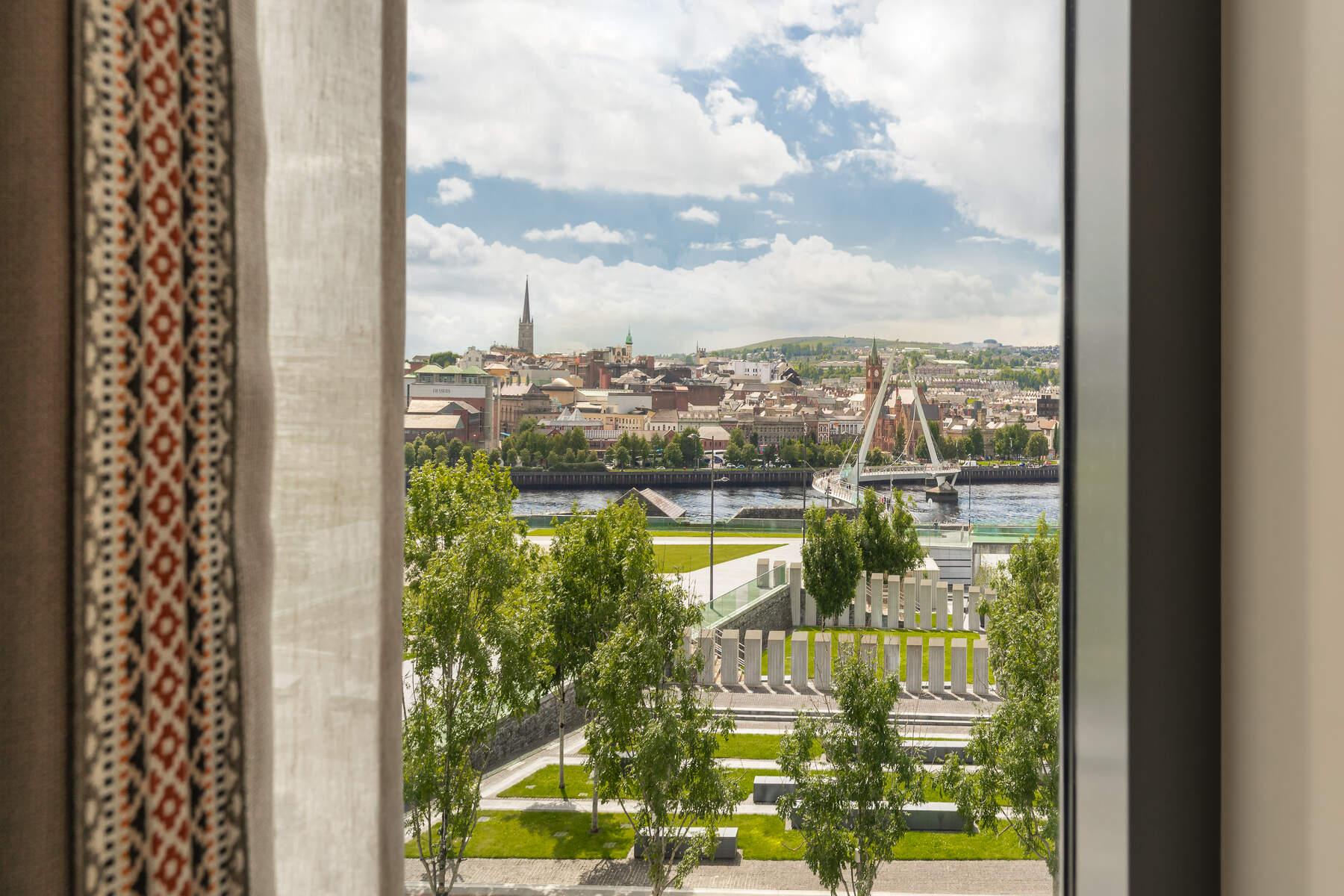
©EbringtonHotel
